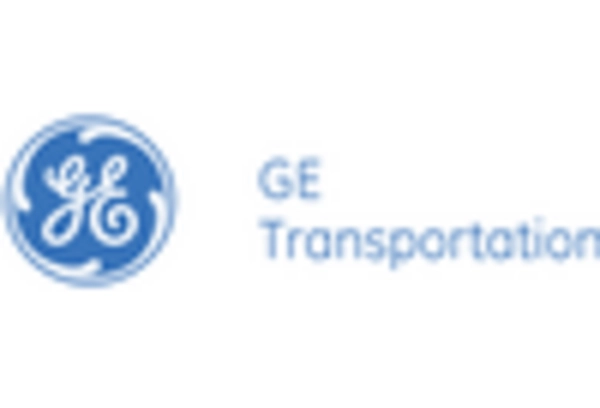Increased Demand for Passenger Safety
Passenger safety remains a paramount concern within the digital railway market in Canada. The implementation of advanced safety systems, such as automated train control and collision avoidance technologies, is becoming increasingly prevalent. These systems utilize real-time data analytics to enhance situational awareness and reduce the likelihood of accidents. According to recent statistics, the adoption of these safety measures has the potential to decrease incident rates by up to 30%. As public awareness of safety issues grows, the demand for safer railway systems is likely to drive investments in digital technologies. Consequently, the digital railway market is expected to expand as stakeholders prioritize safety enhancements to meet regulatory requirements and public expectations.
Environmental Regulations and Compliance
Stringent environmental regulations are increasingly influencing the digital railway market in Canada. Government policies aimed at reducing carbon emissions are prompting railway operators to adopt greener technologies. Digital solutions, such as energy-efficient train systems and automated energy management, are being implemented to comply with these regulations. The Canadian government has set ambitious targets to reduce greenhouse gas emissions by 30% by 2030, which is likely to drive the adoption of sustainable practices within the railway sector. As a result, the digital railway market is expected to see a rise in investments focused on eco-friendly technologies, aligning with both regulatory requirements and public demand for sustainable transportation options.
Advancements in Communication Technologies
The digital railway market in Canada is growing rapidly, driven by advancements in communication technologies. Enhanced connectivity solutions, such as 5G networks, are facilitating real-time data exchange between trains and control centers. This improvement in communication is crucial for operational efficiency and safety. The integration of Internet of Things (IoT) devices allows for continuous monitoring of train conditions, which can lead to predictive maintenance and reduced downtime. As a result, the digital railway market is projected to grow at a CAGR of approximately 8% over the next five years, driven by these technological advancements. Furthermore, the ability to transmit large volumes of data quickly enhances decision-making processes, thereby optimizing overall railway operations.
Investment in Infrastructure Modernization
Infrastructure modernization is a critical driver for the digital railway market in Canada. Aging railway systems require significant upgrades to meet contemporary operational standards and passenger expectations. Investments in digital technologies, such as automated signaling systems and advanced maintenance solutions, are essential for enhancing the efficiency and reliability of railway services. The Canadian government has allocated approximately $10 billion for infrastructure improvements over the next five years, which is likely to stimulate growth in the digital railway market. This funding will support the integration of innovative technologies that improve service delivery and operational performance, ultimately benefiting both operators and passengers.
Growing Urbanization and Population Density
Urbanization trends in Canada are significantly influencing the digital railway market. As cities expand and populations increase, the demand for efficient public transportation systems intensifies. Digital railway solutions, such as smart ticketing and real-time passenger information systems, are essential for accommodating the needs of urban commuters. The Canadian urban population is projected to reach approximately 38 million by 2030, necessitating improvements in railway infrastructure. This demographic shift is likely to drive investments in digital technologies that enhance the passenger experience and operational efficiency. The digital railway market is thus positioned to benefit from urbanization, as stakeholders seek to modernize and expand railway services to meet growing demand.

















Leave a Comment